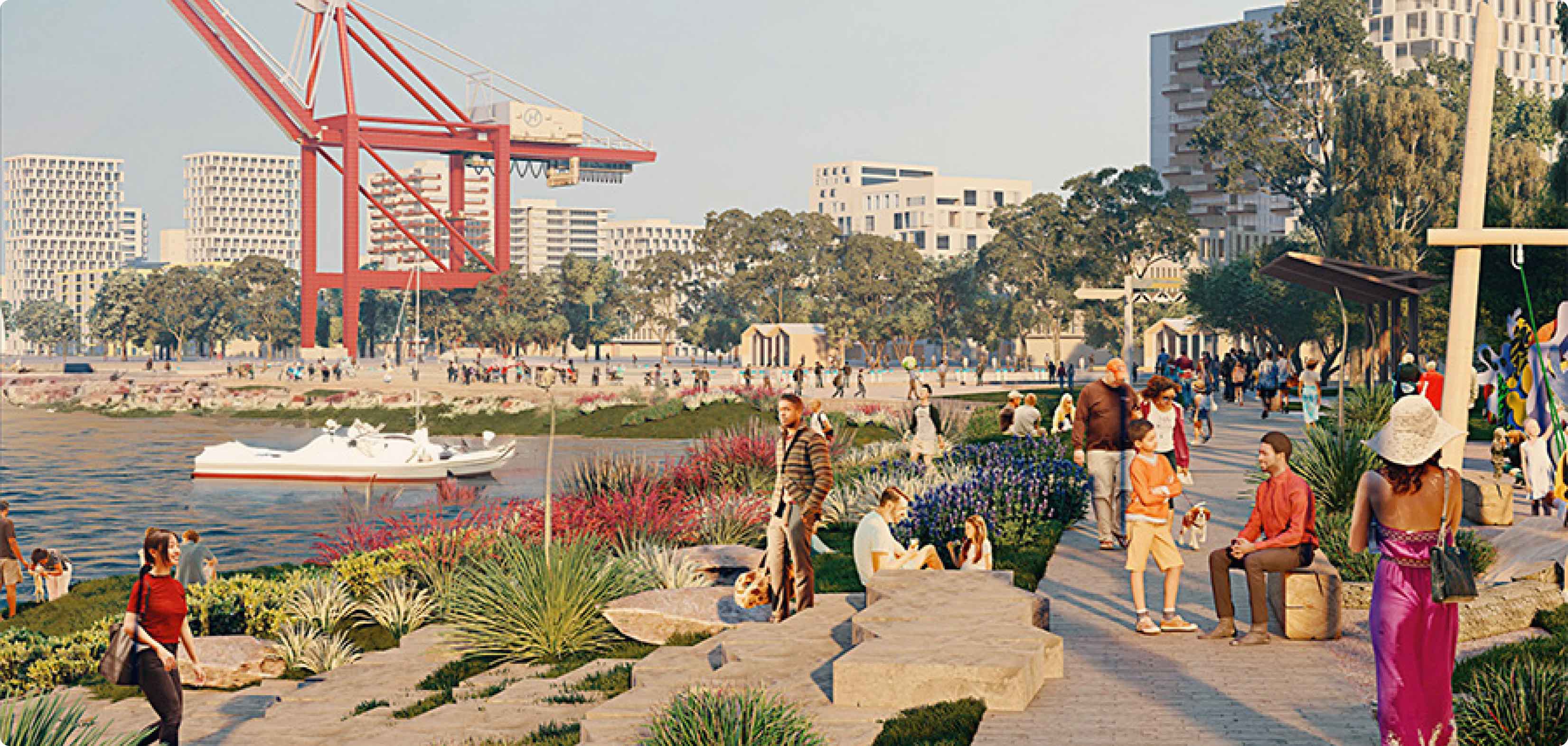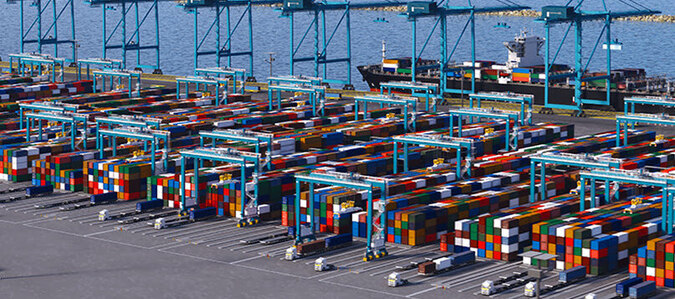For more than 120 years, Fremantle Port has been Western Australia’s main container port, but it’s now reaching limits that can’t be addressed. To keep WA moving and support future growth, we need a new container port and supply chain that’s built for the challenges ahead.
Most goods that we use for everyday living, including materials for industry, arrive in WA by container, landing at our container port in Fremantle.
Over the next decade as our population continues to grow, so will our container trade. Under a moderate growth scenario, Fremantle’s capacity of around 1.4 million twenty-foot equivalent units (TEU) will be reached by around 2038. This is why we need a new container port ready by then to ensure a seamless transition and without any disruption to our economy.
Transitioning container trade from Fremantle will also:
- Free up 260 hectares of land in Fremantle for residential and commercial development.
- Take freight off inner urban streets.
- Ensure another 100+ years of efficient container trade for WA.
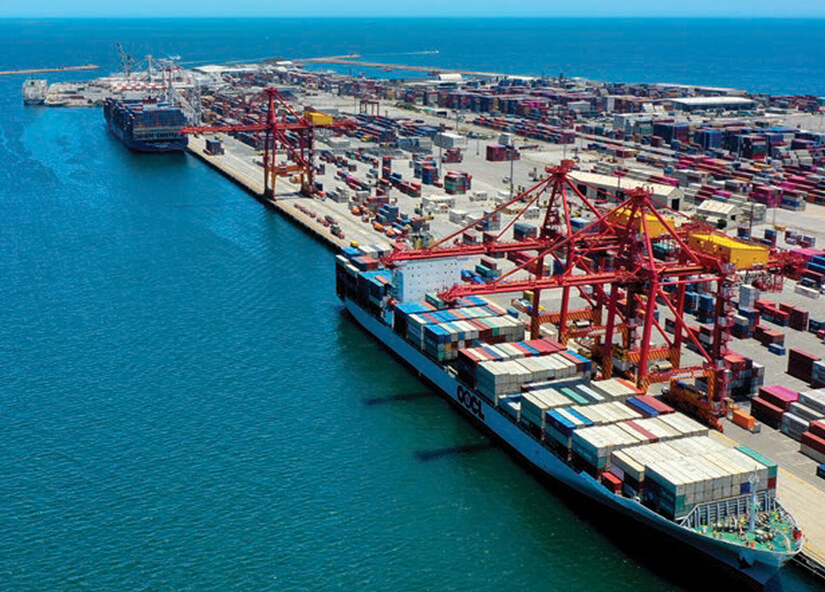
The risks of inefficient trade
Opened in 1897, Fremantle Inner Harbour (Fremantle Port) handles 99% of WA’s seaborne container trade and is the gateway to $445 billion in state-wide economic activity. It handles the equivalent of one container for every three to four West Australians per year.
The closest alternative port is in South Australia, approximately 2,700km away by road.
WA has experienced an almost five-fold increase in container trade over the past 30 years, and it's forecast to approximately double over the next three decades.
When container trade becomes inefficient, the cost of moving goods rises, leading to higher prices for everyday goods, an increased risk of shortages, and bottlenecks that limit our lifestyle and economy.
Why we’re planning now
Over the coming decades, Fremantle and its surrounding freight links, which run through highly urbanised areas, will face a growing number of constraints that will impact its ability to function as an efficient container supply chain, with flow-on costs for businesses and the community.
The question isn’t if we need a new port, but rather when will we need it and where will we build it?
Not having port facilities ready to cope with demand could have serious consequences.
- Cost WA’s economy $11 billion across ten years.
- Threaten jobs.
- Increase consumer costs.
- Increase carbon emissions.
- Risk WA’s position as a strategic hub in the region.
Large and critical infrastructure takes time to develop. By planning now, we can have the new port and supply chain network ready for a transition by the late 2030s, and ensure our supply chain remains efficient and reliable to support WA’s container trade for another 100 years.
This isn’t just about building infrastructure - it’s about future proofing WA’s economy and lifestyle for generations to come.
How container trade is changing
As WA’s population grows, so does our demand for imported goods.
However, due to the trend of increasing containerisation of imports and exports, WA’s container trade is growing faster than our population.
By 2036, our population is projected to reach 3.6 million. This growth will place increasing pressure on our supply chain.
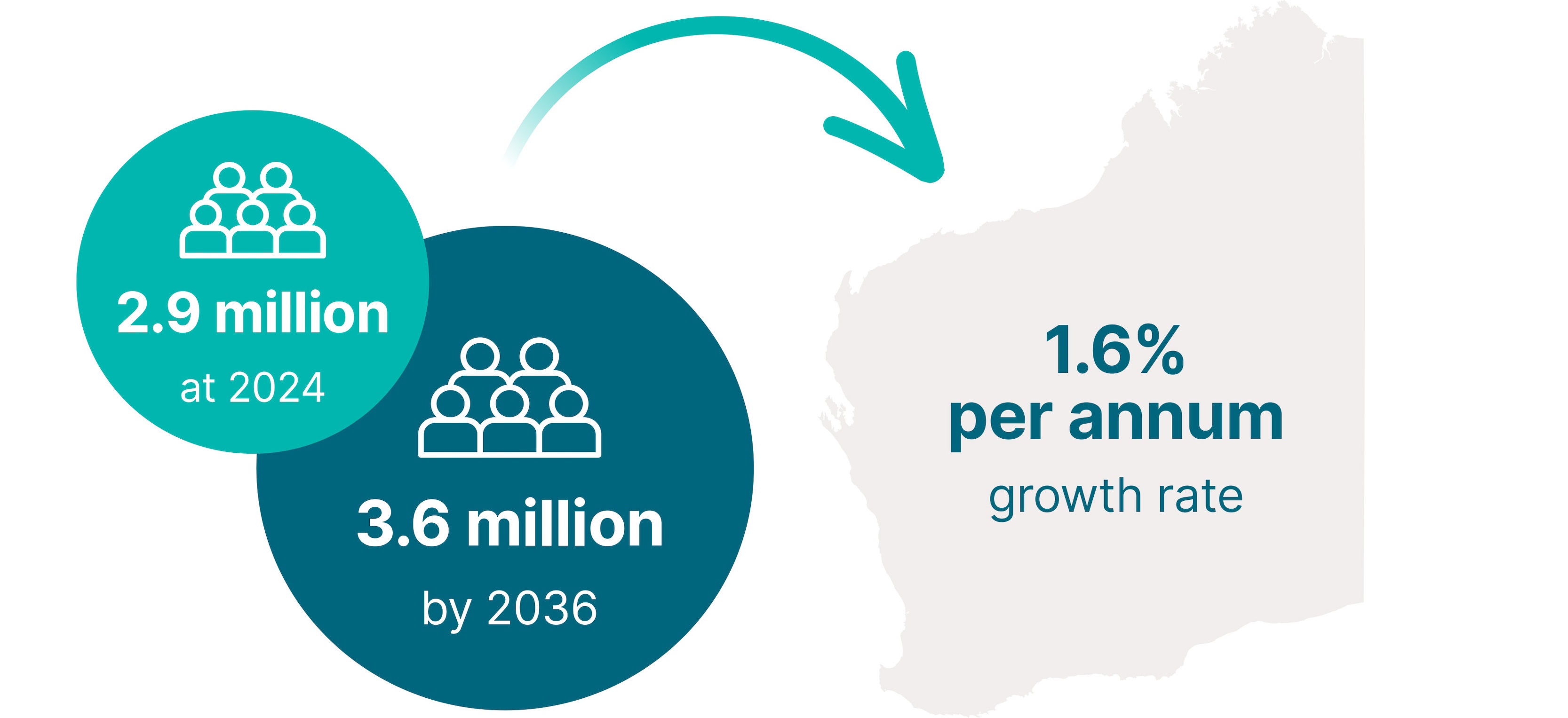
Container trade is closely tied to population and economic growth.
Today, Fremantle Port services around 857,000 twenty-foot equivalent units (TEU) a year.
By 2060, WA’s container trade will rise to 2.3 million TEU per year.
However, Fremantle’s capacity for trade peaks at around 1.4 million TEU. WA needs a container supply chain with larger capacity to ensure trade efficiency.
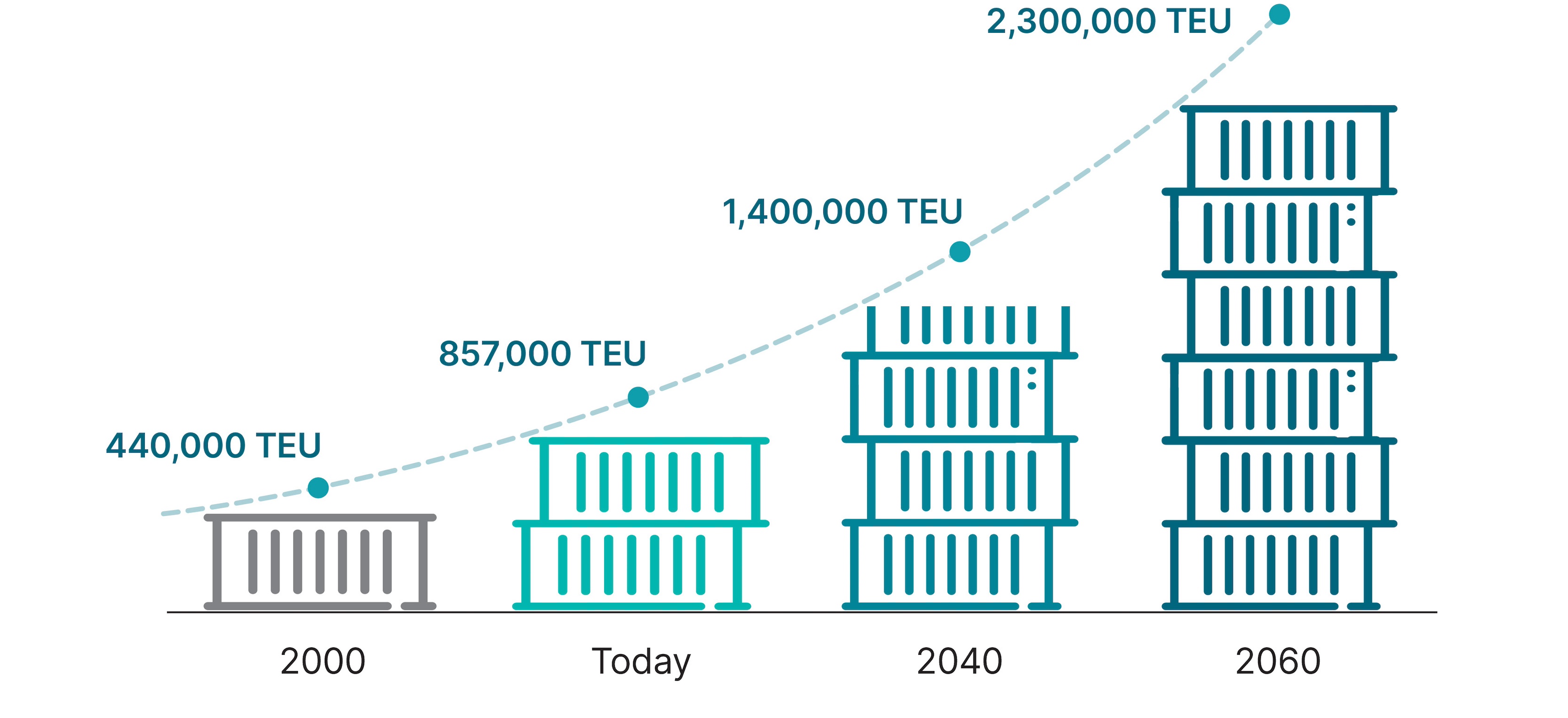
Constraints of Fremantle Port
Fremantle Port needs industrial land to support operations.
As container trade grows, more land is needed but isn’t available given the port’s location within a busy commercial, residential and tourist centre.
In contrast, the Kwinana Industrial Area offers over 10 times more land to support the next 100 years of growth.
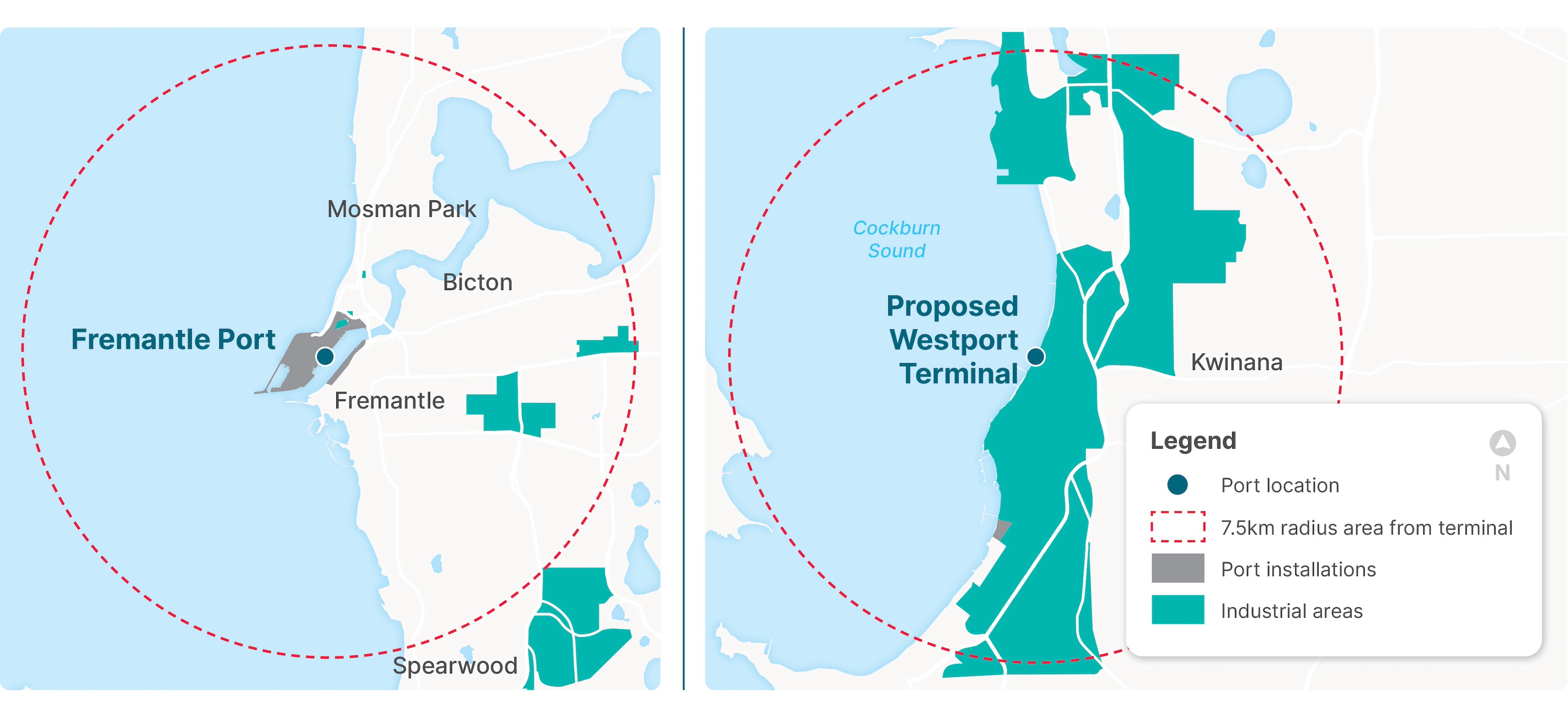
By 2051, freight-related traffic is expected to double.
Around 4,500 trucks per day would require access to and from Fremantle Port, passing hundreds of homes and businesses on the way.
Heavy trucks in these residential areas reduces safety for the community and contributes to congestion.
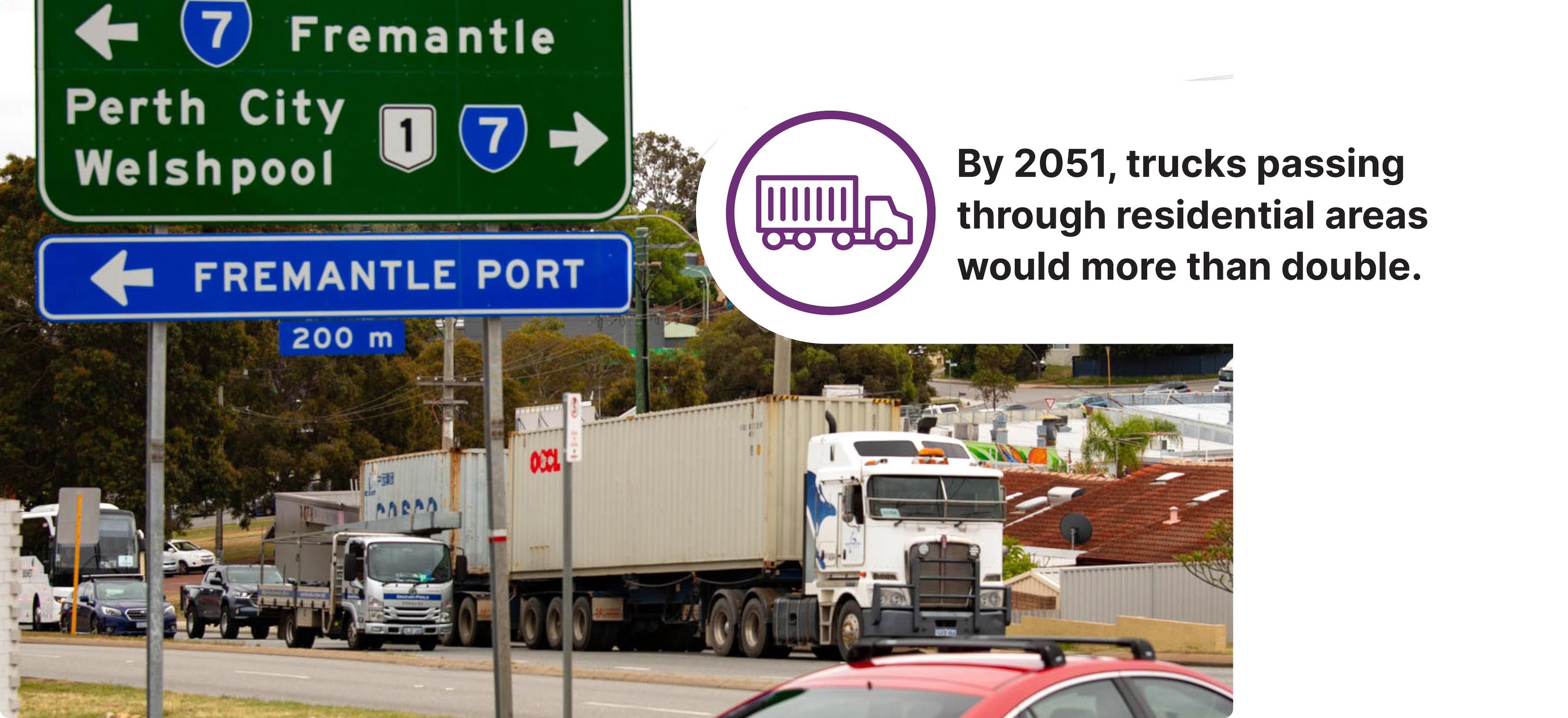
The port is serviced by one freight rail line that passes through the historic area of Fremantle.
As freight volumes grow, the line will reach capacity, and the rail corridor cannot be expanded.
This will force more containers on to trucks, adding to road congestion.
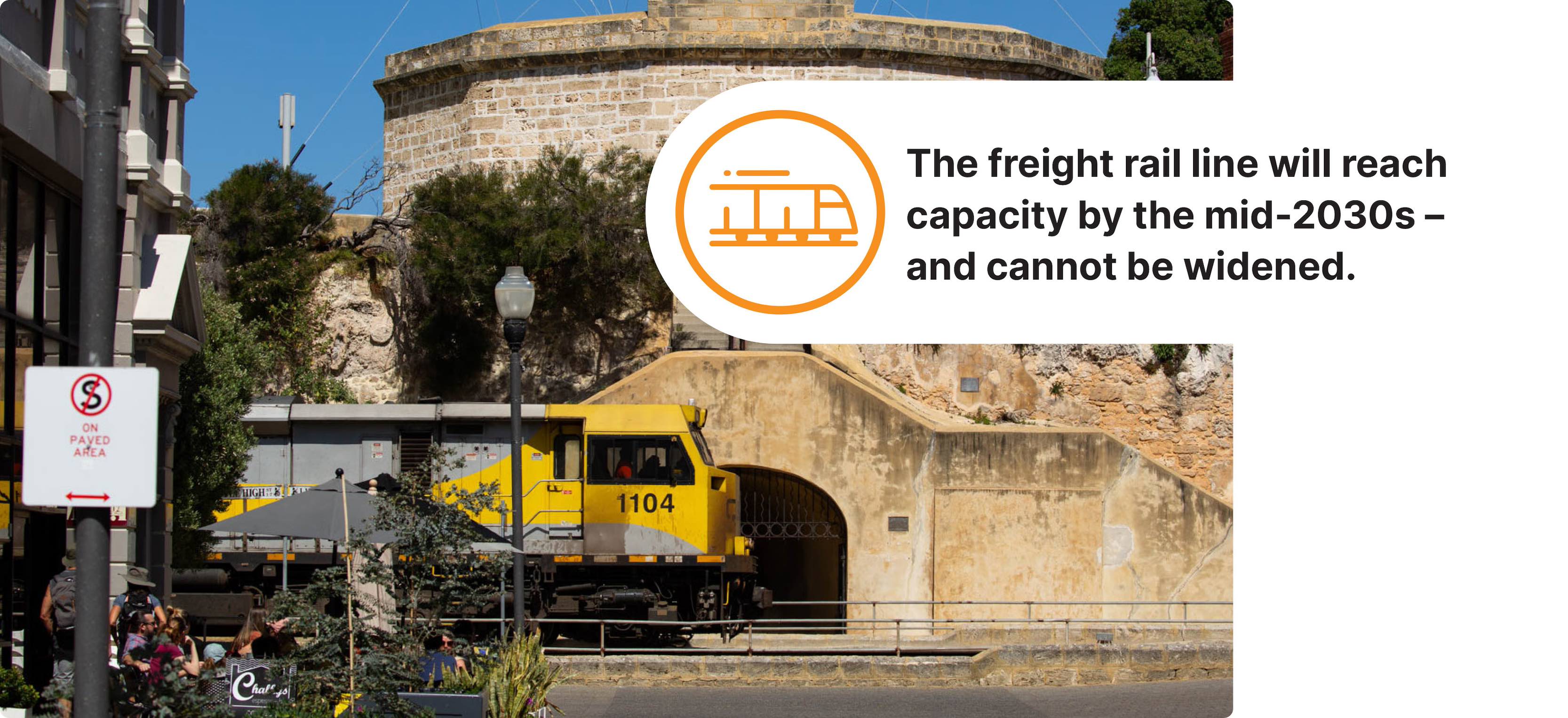
Fremantle harbour can only accept vessels carrying up to 12,000 twenty-foot equivalent units (TEU).
From 2030, Australia is expecting shipping routes to use vessels carrying 14,000 TEU and upwards, which exceed Fremantle Port’s operational limits.
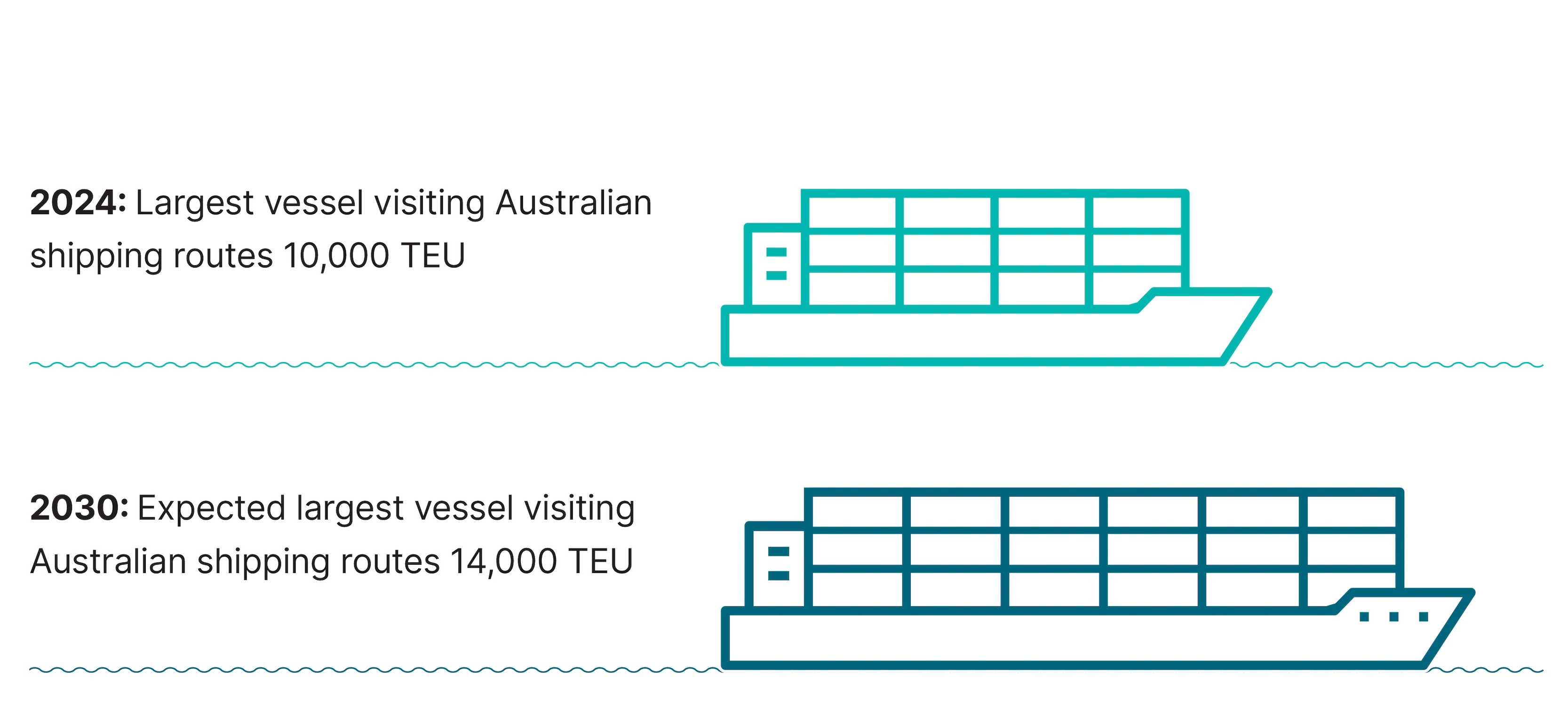
Port infrastructure requires ongoing upgrades.
Upgrading Fremantle Port’s infrastructure to get it past 2040 would be costly – in excess of $2billion – highly disruptive to businesses and residents and would not resolve the long-term issues.
Even with this upgrade, container trade would need to move to Kwinana by 2050.
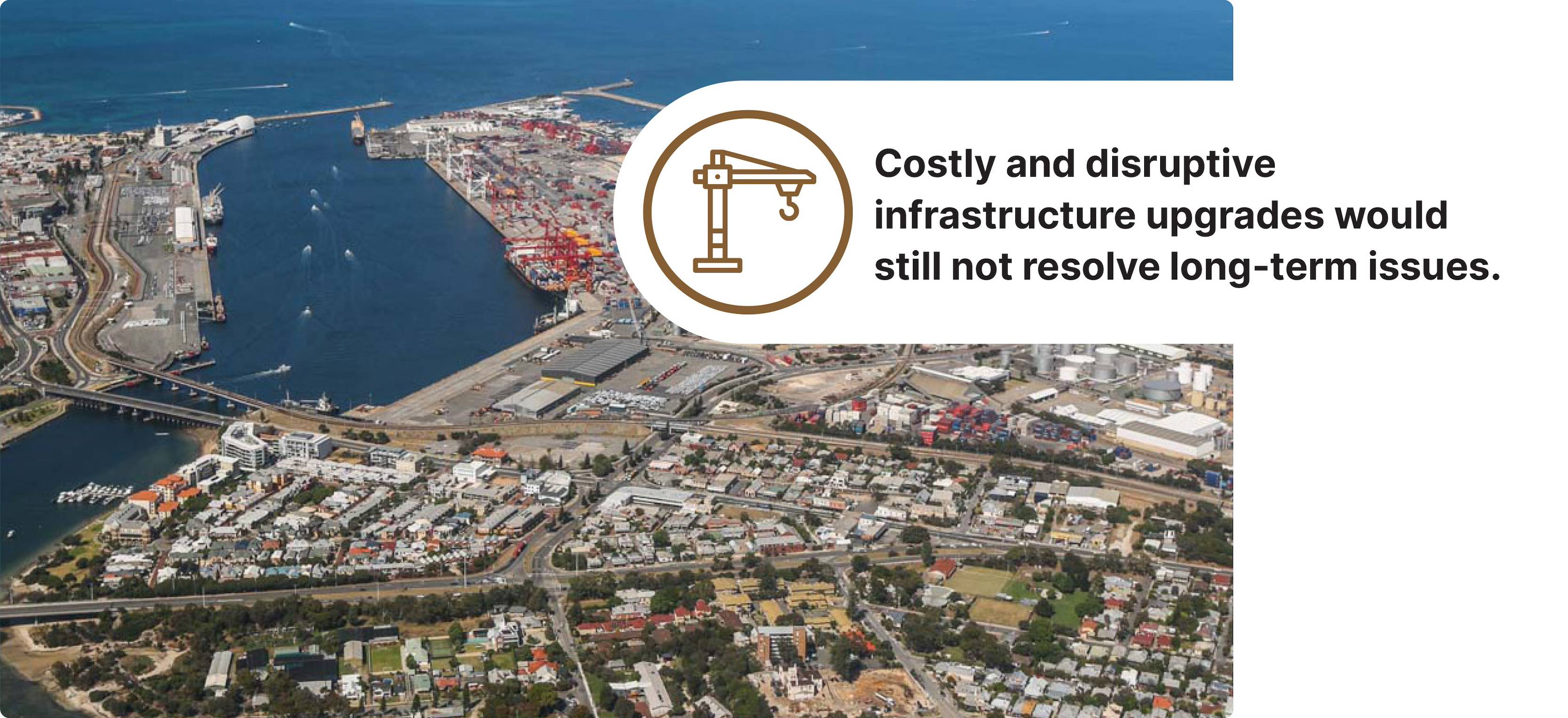
Fremantle Port occupies 180 hectares of inner urban land, including 10km of oceanfront, reserved for port operations.
As WA’s population grows, this valuable land could be repurposed for residential and commercial development - allowing up to 55,000 people to live, work and commute from the vibrant Fremantle area.
